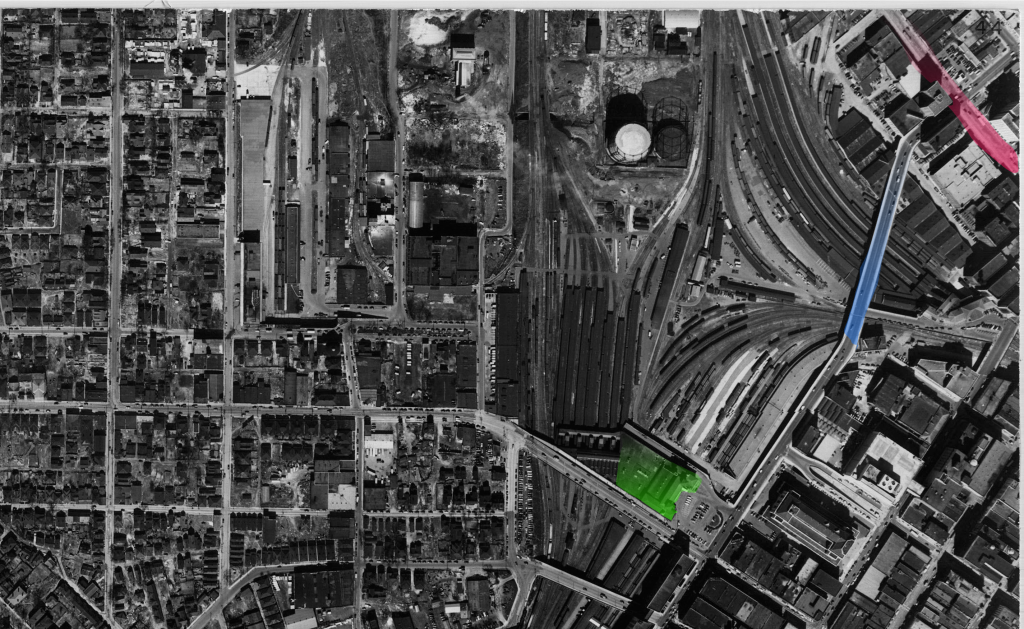Murder at Terminal Station, 1949
Almost nineteen years to the day after Louis Berckmans visited Atlanta, the Metropolitan Opera gave a performance of Mignon at the Fox Theater. At the April 19, 1949 performance, a promising tenor named John Garris played the part of Laërte. Garris and the rest of the company were to leave for Memphis early in the morning on the 21st. The middle of the night train was pushed further back to 4:30 a.m., leaving the group with time on its hands. Garris departure and was found later in the morning, dead in an alley. A generation after Berckmans took care of his business, another view of the station neighborhood points toward its apparent danger.[1]
Atlanta’s rail traffic peaked in 1945, when it received 162 trains a day and 30,000 passengers. Not all of that traffic went through Terminal Station. Twenty-five years earlier, passenger trains arrivals alone had numbered more than 300. By the 1950s, that had dropped to around 100.[2] Garris and the rest of the company, then, traveled to Atlanta at a time when rail travel was still significant but on a demonstrable decline.
Garris’s friends reportedly shared a taxi away from the station when they learned their train had been delayed. He announced that he would walk and join them later. That was the last anyone saw of him until his body was found the next morning, in an alley off of Marietta Street. Police pursued various leads (including one that involved a woman and a legless man traveling in a blood-stained car) but without luck. Observers have wondered whether Garris’s reputed homosexuality may have played a role in the police’s intensity (or lack thereof).
The aerial photo below was taken the year of Garris’s murder. Terminal Station is highlighted in green. The Spring Street viaduct, which Garris likely walked, given where his body was discovered, is highlighted in blue. Marietta Street appears in red.
—
[1] “The Murder of John Garris,” History Atlanta, http://historyatlanta.com/john-garris/, accessed March 1, 2015.
[2] Jim Cox, Rails Across Dixie: A History of Passenger Trains in the American South (McFarland, 2010), 326.





